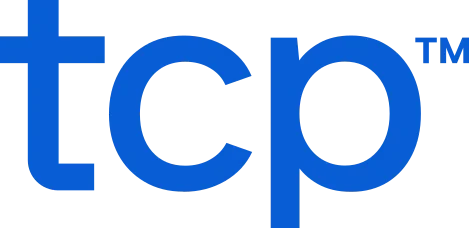Effective employee scheduling is crucial for maintaining productivity, compliance, and employee satisfaction in your workforce. However, many organizations struggle with workforce scheduling errors that lead to inefficiencies, excessive labor costs, and compliance risks.
We’re sharing a few of the most common employee scheduling mistakes so you can save time, avoid headaches, and get your scheduling back on track.
Mistake 1: Not getting scheduling input from employees
When managers create schedules without considering employee preferences, it can lead to disengagement, dissatisfaction, and increased absenteeism. Employees who feel they have no say in their schedules may feel neglected and struggle with motivation and productivity.
Solution: Regularly gathering employee feedback on scheduling preferences and availability fosters a more engaged workforce. Use surveys, one-on-one meetings, or a scheduling software with preference-tracking capabilities to help your managers align employee scheduling decisions with both business requirements and employee needs.
Mistake 2: Not offering employees flexibility
Employees today value flexibility in their work schedules. Rigid scheduling can create dissatisfaction, particularly for team members balancing school, childcare, or other personal commitments. A lack of flexibility can lead to increased turnover and lower engagement.
Solution: Providing your employees with options such as self-scheduling, shift swapping, and remote schedule access empowers them to take control of their work-life balance. If you’re using a workforce management platform, look for one that allows employees to request changes, trade shifts with colleagues, or set availability preferences while still accomplishing what needs to be done.
Mistake 3: Not effectively communicating employee schedule changes
Poor communication regarding schedule changes often results in missed shifts, confusion, and frustration among employees. A lack of clear notifications can disrupt operations and lead to coverage gaps that negatively impact daily tasks.
Solution: Clear, immediate communication is key. Utilizing scheduling tools that send real-time notifications via mobile apps, emails, or text messages ensures your employees receive timely updates. This reduces misunderstandings and helps your organization maintain smooth operations.
Mistake 4: Inefficient scheduling for peak business hours
Many organizations struggle with staffing inefficiencies, either scheduling too few employees during high-traffic periods or overloading shifts when demand is low. This imbalance leads to lost revenue opportunities, decreased customer satisfaction, and unnecessary labor costs.
Solution: Identifying peak hours and staffing accordingly can make a significant difference. By analyzing historical sales data, foot traffic, and service demand patterns, your organization can optimize staffing levels to ensure the right number of employees are on hand at the right times. Implementing shift scheduling best practices can further refine this process, helping your managers anticipate trends and adjust shifts accordingly.
Mistake 5: Creating inconsistent employee schedules
Erratic scheduling can wreak havoc on work-life balance. This unpredictability increases stress, leads to burnout, and can even compel employees to seek more steady job opportunities elsewhere.
Solution: Establishing predictable scheduling patterns helps employees plan their personal lives more effectively, improving job satisfaction and retention. Providing advance notice of any changes allows staff to adjust accordingly. Employing scheduling best practices can assist in maintaining consistency while also accommodating business needs.
Mistake 6: Managing scheduling in isolation
Employee scheduling should not be a standalone process. When disconnected from time tracking, payroll management, and leave management systems, scheduling inefficiencies increase, leading to administrative errors and payroll inconsistencies.
Solution: To keep from managing schedules in isolation, look to integrate your employee scheduling with your broader workforce management tools. Not only will this allow you to seamlessly integrate with your payroll, HR, and compliance systems, it will also reduce manual data entry while improving your operational efficiency.
Mistake 7: Not tracking scheduling metrics
Without data-driven insights, organizations operate in the dark when it comes to scheduling efficiency. Inconsistent staffing, unplanned overtime, and high nonattendance rates can go unnoticed, leading to unnecessary costs and operational disruptions.
Solution: Leveraging workforce analytics allows your organization to monitor key scheduling metrics such as shift coverage, employee attendance, and labor costs. By using real-time data and trend analysis, managers are able to make informed decisions that improve efficiency and profitability.
Mistake 8: Ignoring the right skill mix in scheduling
Some industries, such as healthcare, hospitality, and public safety, require a specific blend of skills and experience levels in every shift. Poorly balanced teams can lead to operational inefficiencies and compromised service quality.
Solution: Understanding shift scheduling best practices will ensure your organization matches the right employee schedules based on qualifications, certifications, and job roles. This validates that each shift is staffed appropriately, enhancing team effectiveness and customer satisfaction.
Mistake 9: Relying on manual employee scheduling methods
Using paper schedules or spreadsheets may seem simple, but these outdated methods increase the risk of workforce scheduling errors. Last-minute shift changes, unplanned absences, and human errors can lead to costly disruptions.
Solution: Implementing automated employee scheduling software streamlines the process, allowing managers to create and adjust schedules efficiently. Modern employee scheduling software provides real-time visibility to ensure seamless shift management that reduces administrative workload.
Mistake 10: Not tracking employee availability accurately
Failing to track employee availability leads to scheduling conflicts, missed shifts, and decreased workforce efficiency. Without a structured system, employees may be scheduled when unavailable, leading to frustration and unnecessary gaps in coverage.
Solution: Use technology that lets staff easily update their availability, request PTO, and swap shifts. This proactive approach solidifies that the right people are scheduled at the right times, improving workplace harmony.
Mistake 11: Guessing shift coverage needs
Many organizations rely on guesswork when planning employee shifts, leading to overstaffing or understaffing. Both scenarios impact productivity and profitability —overstaffing inflates labor costs, while understaffing increases employee burnout and customer dissatisfaction.
Solution: Leverage insights from your workforce management tools to ensure you have the optimal shift coverage mix. Using things like AI and predictive analytics can help your organization allocate the right number of employees based on demand, reducing unnecessary costs and preventing common employee scheduling mistakes.
Mistake 12: Allowing excessive overtime without controls
While overtime can be necessary, excessive overtime leads to payroll errors and compliance risks. Unchecked overtime also increases the likelihood of labor law violations and employee dissatisfaction.
An analysis of over 200 studies found a link between excessive working hours and several adverse outcomes, including increased risk of fatigue, sleep disruption, and occupational injury.
Solution: Leverage employee scheduling best practices to monitor work hours and flag employees approaching overtime limits. This maintains overtime compliance by enforcing predefined policies, helping organizations balance employee workload and budget constraints.
Mistake 13: Overlooking labor law scheduling regulations
Failure to comply with labor law scheduling regulations can result in costly legal penalties. Laws such as the Fair Labor Standards Act (FLSA) and predictive scheduling laws mandate strict compliance with shift assignments, break times, and overtime policies.
Solution: Ensure that your employee scheduling tools have built-in compliance features that help you maintain adherence to labor laws. This will allow you to automate legal requirements, track mandated breaks, and provide documentation to protect your organizations from regulatory fines. In addition, be sure to conduct regular training for managers on labor laws and consult with your legal counsel to ensure your scheduling practices align with regulations.
Optimize workforce scheduling for success
Like anything involving workforce management, employee scheduling must be done in the right way to be effective. Avoiding these employee scheduling mistakes will help your organizations maintain compliance, optimize labor costs, and create a more productive work environment.
Reviewing your scheduling needs, choosing the right technology, and getting buy in from employees will not only make your employee scheduling process more seamless, but it will also enhance your workforce satisfaction.
TCP Software’s employee scheduling and time and attendance solutions have the flexibility and scalability to suit your business and your employees, now and as you grow.
From TimeClock Plus, which automates even the most complex payroll calculations and leave management requests, to Humanity Schedule for dynamic employee scheduling that saves you time and money, we have everything you need to meet your organization’s needs, no matter how unique. Plus, with Aladtec, we offer 24/7 public safety scheduling solutions for your hometown heroes.
Ready to learn how TCP Software takes the pain out of employee scheduling and time tracking? Speak with an expert today.



